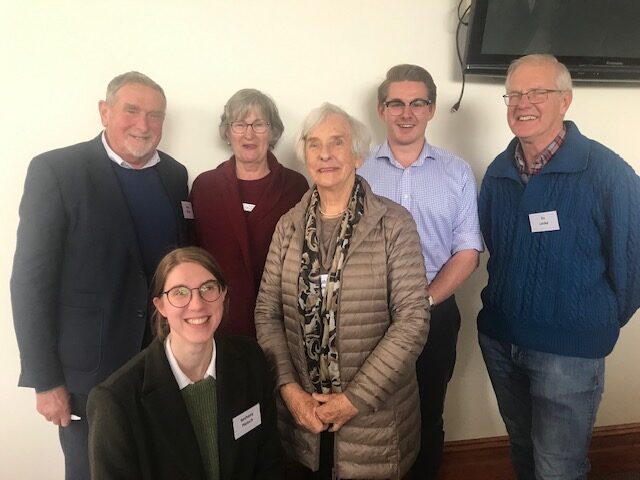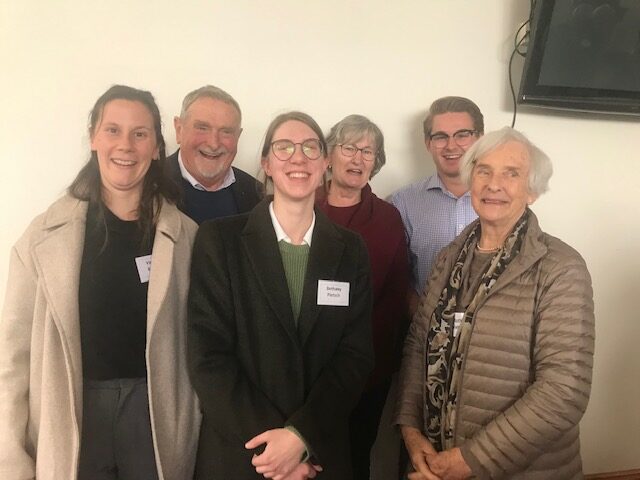by John Clarke
When experts speak with a passion for their subject, their topic comes alive. “SA – German Connections” was the topic at a day long History Month seminar, presented by the Barossa German Language Association, the German Heritage Research Group, Lutheran Archives and Friends of the Lutheran Archives, and held in the historic Langmeil church. Introduced by Ashton Hurn, Member for Schubert, the seminar covered over a century of interaction between South Australia and Germany, beginning with the arrival of the first German immigrants in the 1840s to re-enactments of their departure in modern day Poland.
The audience was told of the fractured families caused by emigration, of a mother weeping for the loss of her son on his 27th birthday, a son living in the Barossa Valley, from whom she had not heard for over a year. Among families decisions had to be made. Encouraged by reports from relatives in their new land, should they too emigrate? But then who would care for elderly parents? Or should they uproot them and take them on the long, sometimes dangerous voyage to the other side of the world?
The early immigrants came to escape religious persecution or to find a better life. They were mainly agricultural labourers, but after the Revolutions of 1848 intellectuals sought escape from political repression. Many arrived aboard the Louise in 1849 and settled at Buchfelde outside of Gawler. Among those aboard the Louise were Gustav Lindemann and his family. Quickly disillusioned, he returned to Germany after nine months, and there he wrote a book: Meine Auswanderung nach Süd-australien und Rückkehr zum Vaterlande: Ein Wort zur Warnung (My emigration to South Australia and return to the fatherland: a word of warning). He wrote that sculptors became stone cutters in quarries, artists became house painters and clerks sold sausages from door to door.
A happier Buchfelde pioneer was Richard Schomburgk, second Director of the Adelaide Botanic Garden. From his arrival in the colony he sent specimens to Germany, not only botanical specimens, but also specimens of fauna and Aboriginal artefacts. Of particular interest was “Schomburgk’s chook”, the malleefowl, of interest because of their nesting habits. The males build large nest mounds, in which the females lay eggs. Unfortunately for those who wished to study the birds’ habits, in captivity they might build mounds, but the females failed to cooperate by laying eggs.
There is irony in the South Australian – German interaction when relations broke down during World War I. At the outbreak of war there were Australians visiting the homeland of their ancestors and young men studying to become pastors at German seminaries. Among the visitors was Tanunda businessman Ernst Schrapel. He escaped from Germany and returned home. There he was branded an enemy alien and was interned on Torrens Island. The student pastors with their German surnames were interned in Germany as enemy aliens. At the end of both the first and second world wars food parcels were sent to Germany.
In Klepsk, Poland (formerly Klemzig, Prussia) residents dress in period costume and re-enact the departure of Kavel’s people for South Australia 180 years ago. History may be forgotten for a while, but history never dies.
The photos show Ashton Hurn, Member for Schubert, opening the Seminar Day, Steffi Traeger welcoming those in attendance and presenters (l to r) Vanessa Kreusch, Peter Mickan, Bethany Pietsch, Julie Weckert, Sam Doering and Ruth Walter, and (l to r) Peter Mickan, Bethany Pietsch, Julie Weckert, Ruth Walter, Sam Doering and Ev Leske.




